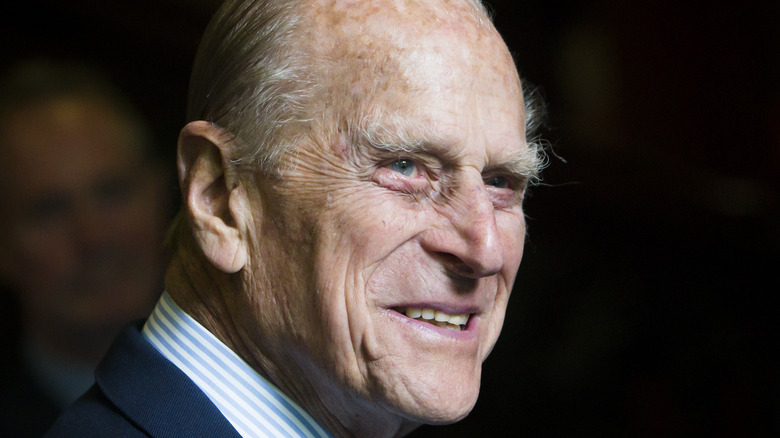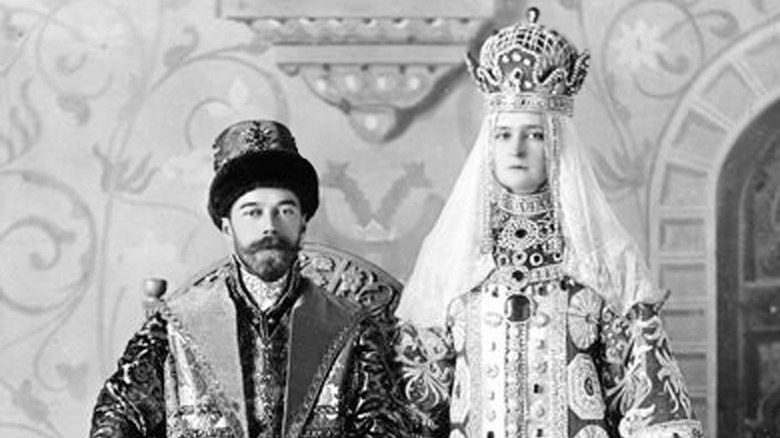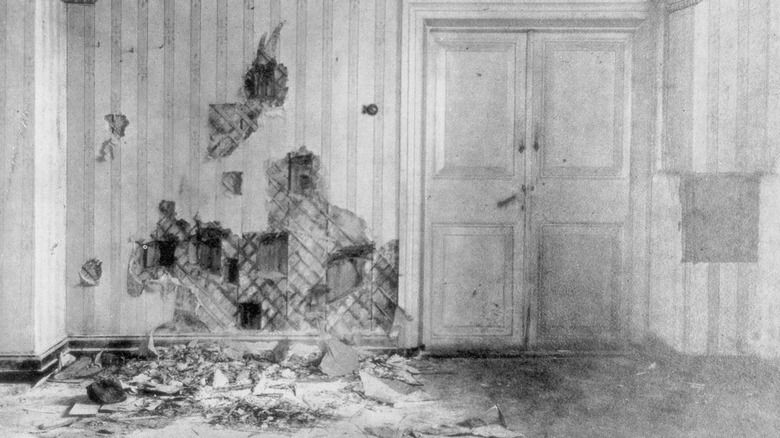How Prince Philip Was Related To The Romanovs
For centuries, European royalty often married their relatives in order to consolidate power, strengthen alliances, and retain realms, according to the Daily Mail. While the practice is much less prevalent these days, it created a web of genetic ties that connect families across countries and generations. For instance, Prince Philip and Queen Elizabeth II were third cousins, but more importantly for researchers, he had direct ties to the Romanovs who ruled Russia from 1613 until they were deposed during the Bolshevik Revolution in 1917, per Britannica and Express. (As an aside, Elizabeth herself was related to the Romanovs as well — her grandfather was the first cousin of the late tsar.)
After the last Russian tsar, Nicholas II, abdicated his throne, the Bolsheviks under Vladimir Lenin imprisoned him and his family at the remote Ipatiev House in Yekaterinburg, Russia, where they murdered the tsar and his family on July 17, 1918, according to History. The Bolsheviks announced the assassination of Tsar Nicholas II, but for years afterward, rumors about what had befallen the rest of the family swirled. It wasn't until after the fall of the Soviet Union in 1991 that the world received definitive proof of their brutal ends, in part thanks to Prince Philip.
Prince Philip's complicated family tree
Prince Philip, the Duke of Edinborough, was born on the Greek island of Corfu in 1921, the son of Prince Andrew of Greece and Denmark and Princess Alice of Battenberg, per the official site of the British Royal Family. His family ties extended through nearly every royal family in Europe and he was related to the Romanovs through all four of his grandparents, according to i News and Express.
On his mother's side, he was related to Britain's Queen Victoria, who was his great-great-grandmother (as well as Queen Elizabeth's). Tsarina Alexandra, the last empress of Russia, was Queen Victoria's granddaughter and Prince Philip's great-aunt, per Express and the Royal Collection Trust. On his father's side, his grandmother was the Grand Duchess Olga Konstantinovna, a granddaughter of Nicholas I — and his grandfather, George I of Greece, was a brother-in-law of Alexander III, Tsar Nicholas II's father, per The Moscow Times.
Prince Philip provides definitive proof of the Romanov's grisly end
In 1991, researchers exhumed five bodies from a shallow grave near where Ipatiev House had once stood before being bulldozed in 1977, per the Independent. While it seemed very likely that they were the remains of the tsar and tsarina and three of their children, genetic testing was the only means of definitively identifying the bodies. They were able to extract DNA from the remains and Prince Philip provided a blood sample that was used to definitely identify the bodies as being the tsar and part of his family.
It wasn't until 2007 that researchers discovered the remains of the last two members of Tsar Nicholas II's family murdered by the Bolsheviks back in 1918. There had been long-running speculation that the youngest daughter, Anastasia, had survived, but with the help of Prince Philip's DNA, researchers were able to finally put the myth to bed, per the Independent. Prince Philip died in 2021, and his third cousin and wife, Queen Elizabeth II, died the following year. The fifth season of the Netflix series "The Crown" explores, in part, the British royal family's connections to the Romanovs.


